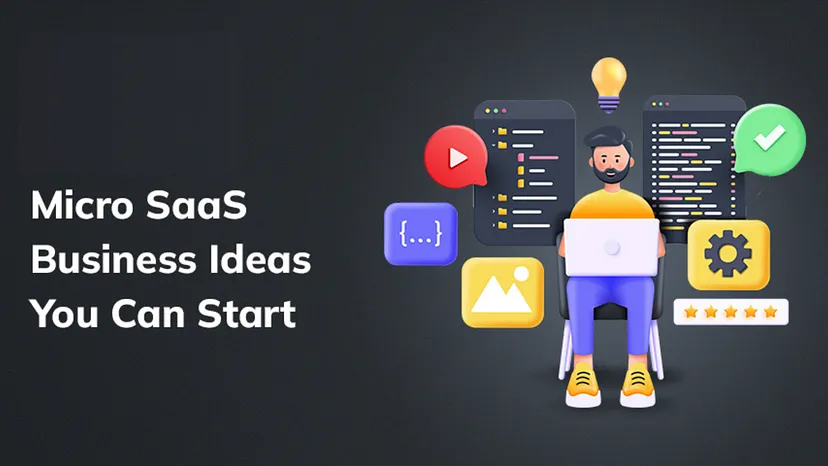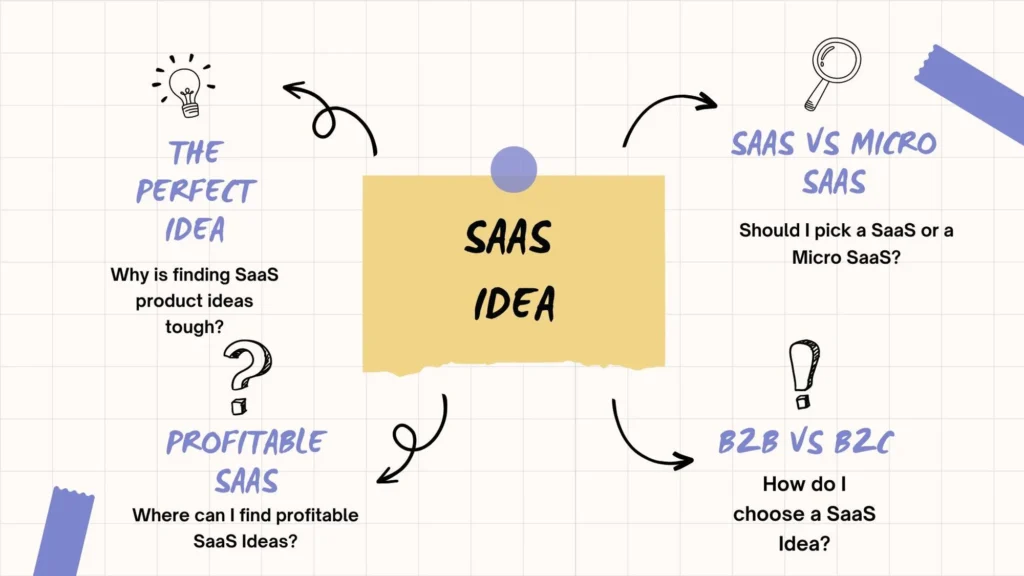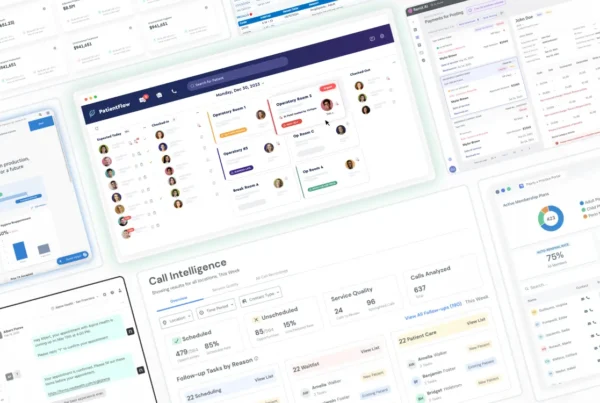
In 2024, building a successful Micro-SaaS business offers tremendous potential, but the first step is discovering the right idea. Unlike large-scale SaaS products, Micro-SaaS focuses on solving a specific, narrow problem for a well-defined audience. However, many entrepreneurs rush into the process without a solid framework for identifying and evaluating Micro-SaaS ideas. This guide will help you navigate through this journey and uncover opportunities that align with your skills, resources, and market demands.
What Makes a Good Micro-SaaS Idea?
To develop a profitable Micro-SaaS business, you need to identify ideas that are achievable and address clear market needs. Let’s explore the critical factors that determine whether a Micro-SaaS idea is worth pursuing.
1. Growing Markets
The foundation of a successful Micro-SaaS lies in targeting a growing market. Trends and evolving consumer behaviour can create opportunities for niche products. For instance, the rise of no-code platforms or the increasing demand for product feature upvote tools reflects markets gaining momentum. By positioning yourself in such spaces, your product has a better chance of gaining traction faster compared to stagnant markets.
can create opportunities for niche products. For instance, the rise of no-code platforms or the increasing demand for product feature upvote tools reflects markets gaining momentum. By positioning yourself in such spaces, your product has a better chance of gaining traction faster compared to stagnant markets.
2. A Defined Audience
A strong Micro-SaaS idea serves a highly specific, narrow audience. Contrary to popular belief, targeting a niche doesn’t mean addressing an obscure problem. Instead, it means providing a tailored solution for a defined slice of a broader market. For example, while live chat services are in high demand, building live chat specifically for Shopify stores that prioritizes lightweight, affordable, and simple designs narrows down the focus effectively.
A well-defined audience allows you to streamline your marketing efforts and create a more impactful product. Ask yourself: Who exactly am I serving? Who am I not serving?
3. Revenue Potential
Even with a defined audience, you need to ensure your market is large enough to sustain your business goals. While Micro-SaaS companies don’t need to chase billion-dollar market opportunities, they should aim for a market size that allows scalability. For example, if you need to make $3,000 per month and your product is priced at $15/month, you need about 200 customers. Ideally, validate that your audience is large enough to support your business by estimating 10-100x the customers you’ll need to reach your goals.
4. Product Complexity
As a solo founder or part of a small team, the complexity of your Micro-SaaS idea should match your resources. If developing your MVP takes more than two to three weeks, you’re likely tackling too big of a project. The Minimum Lovable Product (MLP)—the smallest version of your product that customers will pay for—should take about four to eight weeks of development. This constraint ensures you remain agile and get your product into the hands of users quickly.
5. Code vs. No-Code Solutions
In today’s tech ecosystem, there’s no strict rule that you must write code to create a successful Micro-SaaS product. A wide array of no-code tools enables entrepreneurs to build and launch without deep technical expertise. For instance, a no-code job board or community-based platform can be developed quickly using existing tools. The focus should be on solving a problem effectively, whether through coding or using no-code platforms.
Where to Find Micro-SaaS Ideas
Once you understand the framework for evaluating Micro-SaaS ideas, the next step is finding them. Here are some effective methods to get started.
1. App Marketplaces and Growing Platforms
A great starting point for Micro-SaaS ideas is app marketplaces where potential customers are already searching for solutions. Shopify, Atlassian, Slack, and Intercom app stores provide fertile ground for niche plugins and add-ons. When the core platform doesn’t meet specific user needs, third-party developers step in with Micro-SaaS solutions.
Platforms like Shopify have demonstrated rapid growth, ensuring a steady stream of new users. This reduces your marketing burden since many customers find you through the marketplace. An emerging platform like Webflow’s app store, for example, might be poised to replicate the same success Shopify experienced years ago, presenting new opportunities for developers today.
2. Niche Versions of Existing SaaS Products
There’s always room for improvement within established SaaS markets. Often, large SaaS companies cater to broad user bases, leaving room for niche products that focus on a specific aspect. For instance, Userlist focuses on customer messaging, a feature that’s also part of Intercom’s offering—but at a significantly lower cost and with greater simplicity. Similarly, Snappa offers a more intuitive and affordable design tool compared to Canva.
Finding a niche within a competitive market allows you to develop a product that targets users dissatisfied with bloated features or high pricing.
3. Productized Services
Another area for potential Micro-SaaS ideas is the productization of common freelance or agency services. If you provide a repetitive service to clients, consider automating and productizing it. Subscription-based design services like ManyPixels transformed the traditional freelance model into predictable, scalable businesses.
This model allows you to offer ongoing value in exchange for recurring revenue, similar to SaaS, but with a more service-oriented delivery model.
4. Scratch Your Own Itch
Some of the most successful Micro-SaaS products emerge from solving personal problems. If you encounter repetitive tasks or inefficient processes in your own work, there’s a chance others are experiencing the same frustrations. For example, Pieter Levels created Nomadlist by building a community and resource platform based on his needs as a digital nomad. By scratching your own itch, you can create a Micro-SaaS that not only benefits you but serves a growing community of users with similar needs.
Conclusion
Identifying a profitable Micro-SaaS idea in 2024 requires balancing creativity, market research, and feasibility. By evaluating the market, narrowing your audience, ensuring revenue potential, and keeping product complexity manageable, you can find ideas that align with your capabilities and business goals. App marketplaces, niche SaaS competitors, and productized services are all fertile grounds for discovery.
Whether you decide to build on top of existing platforms or develop an entirely new concept, following a strategic framework will significantly increase your chances of success. Now it’s time to take these insights and start uncovering your own Micro-SaaS ideas to build a thriving business in the year ahead!
Ready to Build Your Own SaaS Success Story?
At Unoiatech, we specialize in helping businesses bring their SaaS vision to life. Whether you’re looking to scale, optimize, or launch from scratch, our team has the expertise to make it happen. Want to see how we helped one of our clients build a $900M SaaS product? Check out our case study here and discover how we can do the same for you.








